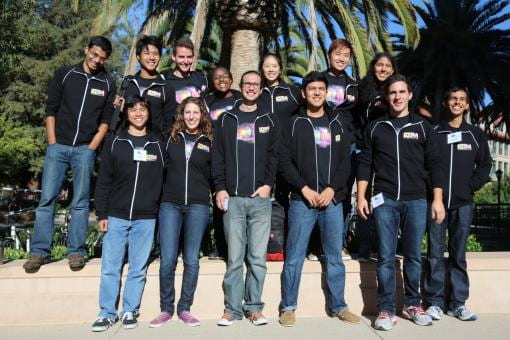
iGEM Team Members
November 28, 2012
Astrobiology revolves around three central questions: “Where do we come from?”, “Where are we going?”, and “Are we alone?” The Stanford-Brown iGEM team explored synthetic biology’s untapped potential to address these questions. To approach the second question, the Hell Cell subgroup developed BioBricks that allow a cell to survive harsh extraterrestrial conditions. Such a toolset could create a space-ready synthetic organism to perform useful functions off-world. For example, the Biomining branch attempted to engineer bacteria to recycle used electronics by degenerating silica and extracting metalions in situ. The Venus Life subproject grappled with the third key astrobiological question by exploring Carl Sagan’s theory
that life could exist in Venusian clouds. To this end, Venus Life designed a cell-cycle reporter to test for growth in aerosol within an adapted Millikan apparatus. Through this triad of projects, Stanford-Brown iGEM aimed to illuminate synthetic biology’s value as a tool for astrobiology.
Gary Wessel
“The 2012 Stanford-Brown iGEM team was an amazing group of enthusiastic undergraduate students from Stanford and Brown Universities who matured into a mighty synthetic biology team. They pioneered a synthetic biology approach to understanding if there could be life in the clouds above Venus, whether humans can engineer microbes to take beyond Earth, and to do useful things such as mining for metals on other planets and asteroids. The fact that they ranked in the top 16 of 190 highly competitive teams worldwide is nothing more than what they deserved. As their faculty advisor, I couldn’t be more proud!”
Lynn Rothschild, Evolutionary biologist, astrobiologist and synthetic biologist at NASA’s Ames Research Center, and a consulting Professor at Stanford University, where she teaches Astrobiology and Space Exploration